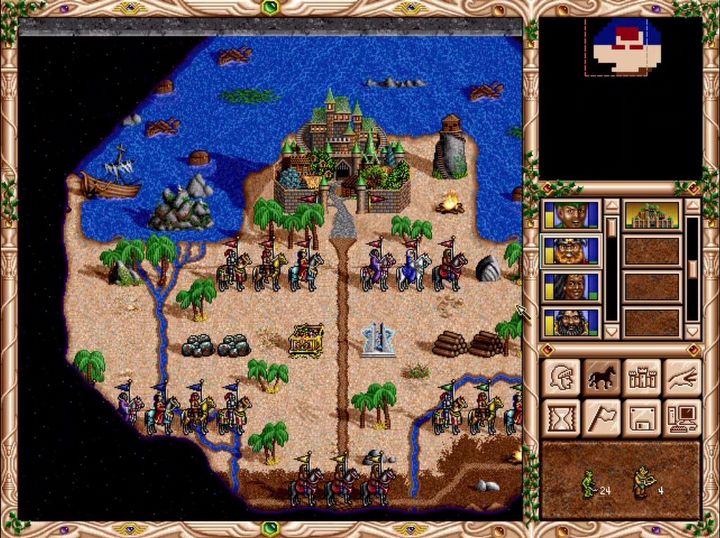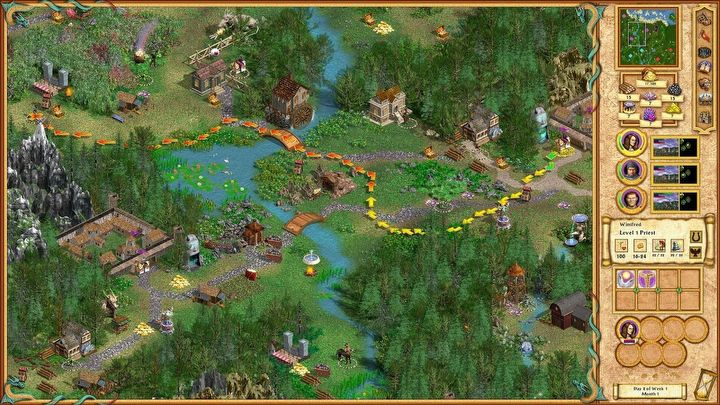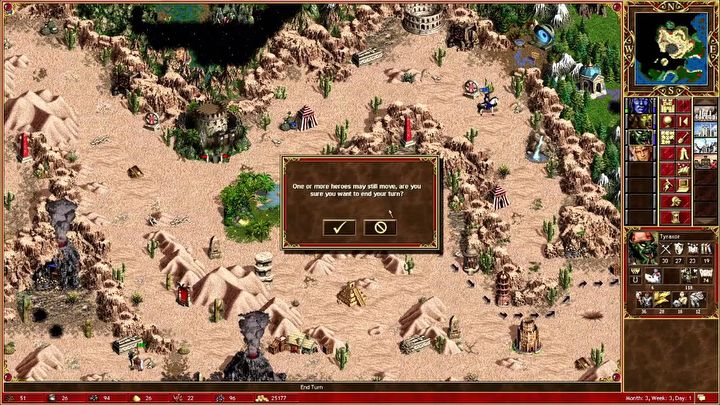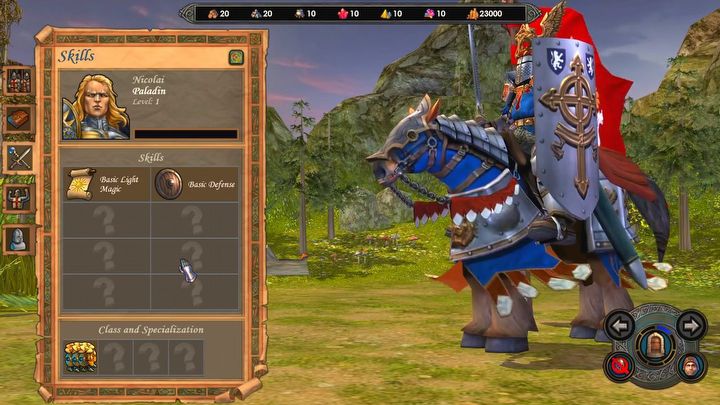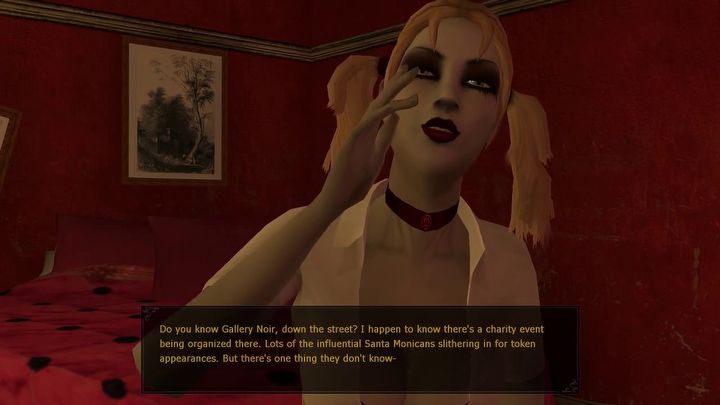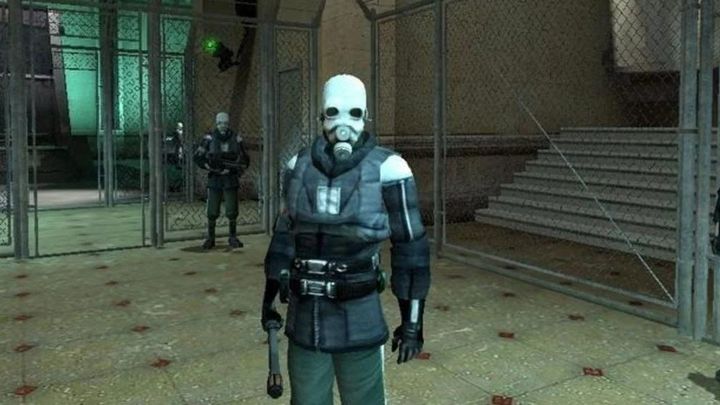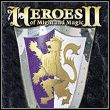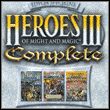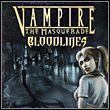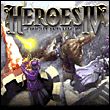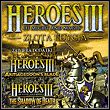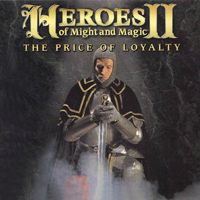Death Threats And Love - We Talk to the Creator of Heroes 3
David Mullich, producer of such iconic games as Heroes of Might and Magic 3 and Vampire: The Masquerade - Bloodlines, met with us to talk about all the successes and mistakes of the past regarding his career in gamedev.
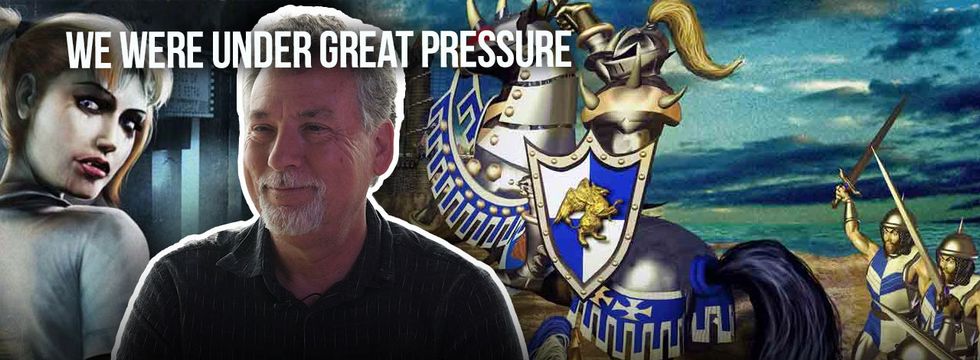
Heroes 3 is one of THE iconic games. Regardless of whether you played Heroes on "hot chair," in the computer science class, or only heard about them – they are a permanent part of the collective gaming consciousness. So as soon as we got the opportunity to meet with the producer of this unique work, David Mullich, we did not hesitate and went to Warsaw to talk to him. Our envoys, Rafal Sankowski and Jordan Debowski, asked Mullich about many behind-the-scenes details, and he did not bite his tongue.
It's worth recalling, however, that Heroes of Might and Magic 3 is not the only game he worked on. He also developed the fourth part of the series and was also employed in the crucial production phase of the legendary RPG, Vampire The Masquerade Bloodlines. About these, and many other ventures, he told us quite a lot. Without further ado, here's the in-depth conversation!
GAMEPRESSURE: What is your favorite game that you ever worked with?
David Mullich: My favorite experience developing a game has been HoMM 3. For a couple of reasons. One: the team was just great. We worked together fine, didn’t have any disagreements, enjoyed each others company and I think that shows in the final project.
Also, it’s the only game that I ever made that I actually enjoyed playing after I was done with it. Usually, the problem is that when you’re making a game, most of the time it’s not fun to play it. It’s not complete, it’s broken, it’s not polished, it doesn’t get fun until the very end. By then you’ve played it so many times you’re just sick of it. Except for HoMM 3. There is something about that game that’s so engaging that I could still play it a couple of years after I was done developing it. And that’s pretty unusual for me.
“Our fans weren’t prepared for the science fiction element”
GAMEPRESSURE: When it comes to HoMM 3. What things are you proudest of? Or what are the things you are disappointed with, or that you would do differently given a chance?
DM: I’m proud of the entire HoMM 3. I think that if anything, there is so many things about it – the art, the gameplay, the story, the music… great music in that game. Everything comes together and creates a really fulfilling experience. So I guess if anything, I am most proud of its harmonious nature all together. If there’s anything I could change… Well, not in the main game, but we were working on an expansion called the Forge Town. And this was based upon a storyline of our sister product in the Might and Magic roleplaying game series… they just came up with the latest version, revelation that it was a cosmic forge in the center of the planet. And was able to produce this science-fiction artifacts. Cause the world of Might and Magic was always a combination of fantasy and science fiction. Since we were following their storyline, we decided to corporate that forge in expansion for Might and Magic 3… It’s an expansion – good time to introduce science fiction elements.
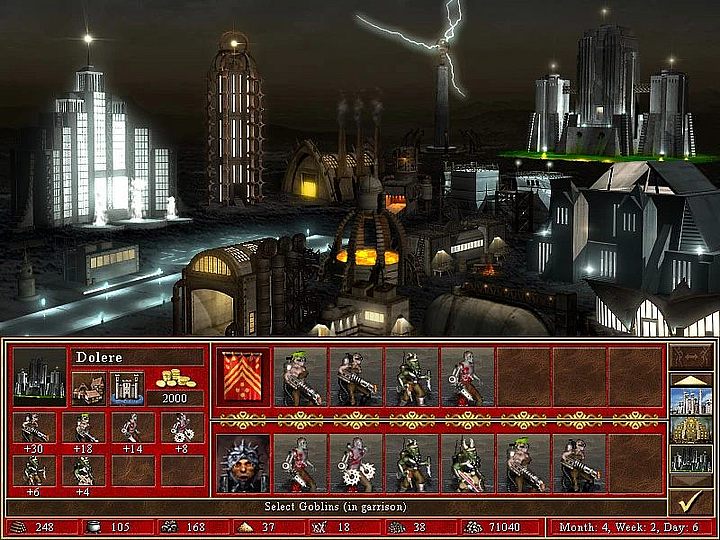
So, we had dwarves with ray guns, Minotaurs with jet packs etc. And unfortunately, as we were doing the initial sketches for it, member of our marketing department came up to me and said, “do you have anything we can show up to fans, just to keep them interested?” So, I walked into the office and just grabbed the sheet of paper and I said “here, pick something from here to show them.” I shouldn’t have done that and that’s my biggest regret. Because some of the pictures that were taken were a little bit too revealing in terms of a female characters. Some of them were scantily dressed… I think the Naga was. When the final product was released a lot of fans complained that art was too sexual in its nature.
Also, I think our fans in general weren’t prepared for the science fiction element. It shouldn’t be sprung out to them in the artwork. As a result, a lot of our fans complained… One of our loyal fan websites threatened to launch a boycott against the game. I would’ve fought, but 3DO, our parent company, couple of days after the boycott was announced, pulled the Forge down and came up with something else. I had to do anything different I would’ve been more careful about what I gave to the marketing department.
Death threats from fans
GAMEPRESSURE: We heard the story that one of the people that worked on HoMM 3, Gregory Fulton, left… Is it true that he left because of the backlash for the Forge content?
DM: Greg Fulton was our lead designer. Yeah, it was after that backlash. He decided to leave. I think that he received some death threats from some of the fans and he was disappointed that our management didn’t take that very seriously. But there may’ve been some other reasons as well – that could’ve been the straw that broke the camel’s back for deciding to leave. But he didn’t just leave the company. He left the gaming industry altogether after that.
GAMEPRESSURE: Were there any other towns or units that the team wanted to implement, but didn’t? Because of any reasons.
DM: I’m sure that at the time we were working on expansions, we may’ve debated what we were going to do next. But I can’t think of any ideas that were took seriously and then abandoned other than The Forge Town.
GAMEPRESSURE: How much of HoMM 3 was built from scratch and how much was developing upon Heroes 2. Cause for me going back to these games was so much different. And yet there were many elements that… It was just useful to know Heroes 2 before going into the HoMM 3. How much of the second game is in the third one?
DM: When we developed HoMM 3 we used the old code base from HoMM 2. So all of the editions we made were built on the exact same programming. It was the exact same engine and we just added to it. Some of the things that we did show this new version of Heroes… We increased the number of towns, changed the way that spells system worked. We added some features… In HoMM 2 the only war machine we had was the catapult, but we added additional war machines that you could have. We also added a lot more creatures, upgrades, a lot more hero types in addition… We had a Might and Magic hero associated with each town. So we expanded that way.
We basically built upon what Heroes 2 did and added to it. Of course, the artwork was completely revised. We took an entire new look at the artwork. Whereas in HoMM 2 the artwork was somewhat fanciful and cartoony… We decided to go with much grittier style, what I call extreme fantasy. Cause at the time, extreme sports were very popular, so I though that… just do something new for the new version of Heroes. That we should take the artwork in the new direction. Something that was a little darker and grittier and more appropriate for the game about warfare than before.
GAMEPRESSURE: Nowadays we have this term “dark fantasy” used for describing games like Dragon Age or The Witcher. Are there any novels or books that influenced your style back then? Did you have something that inspired you in this style?
DM: The thing that most influenced us in terms of artwork was probably Warhammer… Look of the creatures there. But what we did was… There was a website that had a fantastic collection of fantasy artworks. So for each of the creatures, the units that we decided to put into the game, we went out and grabbed our sample artwork for each creature. To guide the artist to what we wanted it to look like. For wyvern grab the couple of wyvern pictures that seemed appropriate, for the basilisk, or troll or whatever it was. So we chose something that were little bit more darker, little bit more menacing in some of the HoMM 2 creatures.
GAMEPRESSURE: You mentioned that you just developed the concept from HoMM 2 to HoMM 3. But we also have Heroes 4… What led you to such drastic modifications in Heroes 4? The previous game sold very well and had very good reviews and just the success. But it’s interesting to me – it wouldn’t be easier to just expand the concept and make a second part of HoMM 3?
DM: For Heroes 3 we made two expansions, and we also created a series of products call Heroes Chronicles that were collections of campaigns that went with it. So just another expansion wouldn’t justify being Heroes 4. After a couple of years, it was time to make a whole new sequel to the game.
And problem is, when doing any sequel, trying to balance what’s new enough to justify people wanting to buy it while still retain enough of the old version that still has familiarity that made it popular in the first place. With HoMM 4, we decided that we couldn’t add any more towns to it. We thought that 8 was the limit. If we increased to ten or twelve, it would become too unwieldy and too difficult to balance. So, we actually scaled back a little bit and we decided to add some new gameplay elements. Probably the main feature was having heroes actually participate in the battlefield. That was my idea basically because the series was called Heroes of Might and Magic, rather than “Generals of Might and Magic.”
So, I thought – if they are heroes, they should be out there actually leading their armies into warfare. That’s one change we decided to make. Maybe not the greatest change to be made but we were just trying to find something different to do. And we had a great variety of heroes’ classes… For HoMM 4, we did decide to rewrite all the engine code. So, we started programming from scratch on that one. One technical innovation we introduced was actually having maps laid on 3D terrain instead of a flat plain. So, it was hills and valleys on the terrain to give it a more realistic look.
GAMEPRESSURE: Did it take more time to implement compared to the previous battle screen?
DM: Our programmer, David Ritchie who had created our map editor, was assigned to task of creating 3D terrain. It was something that he wrestled with for a while, and I gave him a limit… I think – of two months to work on it. And if he didn’t find the way to do it in two months, we were just going to scrap the feature. I think… a week before the deadline he figured out the way to do it, he cracked that one.
GAMEPRESSURE: HoMM 4 compared to HoMM 3 – is there anything you would like to change? To do differently?
DM: I might’ve rethought to put heroes into the battlefield – that might’ve changed the game too much. But otherwise, I can’t think of anything that I would’ve done differently.
GAMEPRESSURE: Obviously, HoMM 4 is a bit controversial amongst hardcore fans – for example, there isn’t online multiplayer in it. And I assume it’s due to time constraints and other factors, like financial problems of 3DO at the time. How was the Heroes 4 production process influenced by the publisher’s troubles? And the financial stuff, too.
DM: 3DO was going trough financial difficulties as we were working on HoMM 4. We were under great pressure to launch by a particular date. Cause they were really relying on income of our game to keep the rest of the company going. 3DO had a lot of other franchises going on… they had an Army Man and few other franchises. But I think they were counting on Heroes to be the savior.
So yeah, there was a lot of pressure on us. Unfortunately, we were not staffed properly trough most of our project in terms of programmers. We were working with just two programmers. Up until the very end – New World Computing was really set up to be working on two franchises at once, but we started to work on the third franchise at the time. And that drew away a lot of our programmers.
So, we didn’t get our multiplayer programmer, lost a couple of other programmers that worked on Heroes 3. So, it was just two programmers working on it up until close to the deadline we were supposed to finish… and when they asked me if we’re going to make the deadline, I said “no, we don’t have enough programmers.” Then it suddenly got their attention and there was mad rush to hire new programmers to our team so… We brought a whole bunch of new programmers at the very last minute to finish it up. And I think that mad rush at the end made some impact on the quality of the game.
Merry Christmas! And now go to work
GAMEPRESSURE: The gaming industry nowadays – it seems mind-boggling that AAA games are made by teams of hundreds of programmers. And here we hear about HoMM 4, one of the beloved childhood classics for many gamers. And to hear it’s just two programmers… Did you have to crunch to ship the game? Like, did you happen to do overtime or work late hours like a lot of developers do nowadays?
DM: We were crunching hours in the final few weeks of the project. And I remember we had to work over the Christmas break in order to finish on time. I couldn’t order anyone to work over that Christmas break, we had to wait for people to volunteer and as it turned out, there were two volunteers – myself and Gus Smedstad who was our lead programmer and lead designer on that project.
So, it was only two of us working over the Christmas break. Everyone else was smart and went home during that time (laugh). But once everyone came back from Christmas for the final new weeks for the project… yeah, we were all working pretty long hours. 3DO also brought additional programmers and other staff from their northern California offices to come down and help us out. So, it was an all-hands-on-deck situation in those final two weeks.
GAMEPRESSURE: You tried multiplayer in your game? Or it wasn’t even an option? When did you abandon the multiplayer in HoMM 4?
DM: Well, we tried implement multiplayer in Heroes 4. Unfortunately, we did lose our original multiplayer programmer from Heroes 3, cause he had been working on other 3DO’s projects. We attempted to put in multiplayer, but I guess we ran out of time.
GAMEPRESSURE: So, after the launch of Heroes 4, 3DO declared bankruptcy and the IP was sold for – I believe 1.3 million dollars? Honestly – did that hurt you as a creator? As you said – it’s one of the games you loved working on. And how did it feel when such a franchise was given to someone else?
DM: New World Computing was sort of its own culture… That we saw ourselves even when we were at home by 3DO. New World was bought by 3DO shortly before I joined New World. But we still saw ourselves as kind of family, separated from them. I think we viewed ourselves as the successful component of 3DO company, of game creation. Because both Heroes of Might and Magic and the Might and Magic roleplaying game were good tellers with every single game.
We saw ourselves as propping them up and it was tough watching the main company sink lower and lower in term of their financial stability. And in fact, when HoMM 4 was shipped, most of us in New World were laid off. And I was one of them. So, I left company before HoMM franchise was sold to Ubisoft.
I really didn’t experience it firsthand and attended the E3 about a year after I was laid off and I went to the Ubisoft booth, and they were showing their plans for Heroes of Might and Magic 5. So I went there, cause I was interested, but as I heard them describing it, it was sort of like listening to somebody else raising your kids, and I decided that I needed to devoid myself completely from the situation. I never did play HoMM 5 and I never paid any attention to what else they were doing in the Heroes series.
GAMEPRESSURE: Have you never played Ubisoft’s Heroes after that experience at E3?
DM: I never played any of the Ubisoft Heroes of Might and Magic games.
QUESTIONS FROM FANS FOR FANS:
GAMEPRESSURE: I just learned that Sir Mullich – the character from one of the towns – is named after you. Whose idea was that, and why is speed his main skill?
DM: I came back from vacation and members of my team said they had a surprise for me. We were working at the time on the expansion for Heroes of Might and Magic 3. They called me over to the screen and they showed me character called Sir Mullich. It was the picture of me that had been taken from my Magic 7, a role-play game that New World Computing was developing alongside the Heroes of Might and Magic strategy game.
So this is picture of me from a scene in a town hall when you come after doing a quest and town hall members give you thumbs up or thumbs down. They’ve taken that picture from that game and put it into HoMM 3 expansion. And they named character after me – Sir Mullich – and gave him kind of silly description along with +2 speed as his… It was meant to be funny and I looked at it, I laughed and I said “ok, you can put it in the game.”
GAMEPRESSURE: Is the eagle eye skill good in your opinion?
DM: In my opinion? Well, we used the eagle eye skill, we took it over from Heroes of Might and Magic 2, so it was carried over from the previous game. We at the time thought it was good. And since then I heard from a lot of people that they think eagle eye isn’t good. So there’s some different opinions about that.
GAMEPRESSURE: You favorite unit or town in HoMM 3 or 4?
DM: From HoMM 3 I think my favorite town is the Tower Town. It’s because I like the background for it, the mountains and the snow, it always was one of my favorite environments. Maybe not the most powerful town, but aesthetically it is one of my favorite ones.
GAMEPRESSURE: Air magic or earth magic?
DM: I think I prefer air magic. Earth magic is too dirty, yeah? I don’t like getting my hands dirty.
GAMEPRESSURE: What game are you playing right now?
DM: Lately, I played a lot of games made by my students. I teach game design at ArtCenter College of Desing in Pasadena, California. And in one of the classes I teach we make the final project from groups of students before they graduate. And one of our students made a great game that takes place in Palace of Versailles in France. You are chased by a demon and I have to say I’ve been so busy with that for the past spring, that I didn’t have time to play other games. I’m really focused on what my students are doing right now.
GAMEPRESSURE: Do you know that HoMM 3 is improved by fans and there’s new content like Horn of the Abyss mod which ads a sort of a pirate town?
DM: I am aware of all the fan mods creations for HoMM 3 including Horns of the Abyss. I’ve not actually played it myself, but people tell me about what’s happening with it and I think it’s great. I think it’s great that Ubisoft is continuing the franchise even if they didn’t quite reach that right combination of elements that resulted in HoMM 2 and 3.
I’m just glad they haven’t completely let the franchise die and I’m very happy that great fans are still working on the game and still play the game, and tournaments and are inspired enough to create their fan artwork, the HoMM 3 cosplayers… And there is one musician who sings, creates YouTube videos singing to Heroes soundtrack. I think that it’s all fantastic stuff.
GAMEPRESSURE: You said before that you’re a teacher now. Could you tell us more about your professional life right now? You’re not developing games anymore I assume? Are you completely focused on the academic aspect?
DM: Two years ago, I was leading a dev team for a television channel that specializes in art, music, fashion and art films… And I was leading the developing team that was creating a virtual world based upon their brand. Unfortunately, they ran out of money before we could complete the project… So that’s the last big team I ran. That was about two years ago. Most of the time I spend these days on teaching. I teach game design ArtCenter College of Desing in Pasadena and currently I’m teaching three classes every term. I’m also starting to teach a new class in game history at the Otis College of Art in Los Angeles. So, most of my time right now is spend on teaching but I’m also doing consulting…
Couple of years ago I was expert witness for the lawsuit between Wizards of the Coast and Cryptozoic. I was helping the legal team figure out whether the pad was valid before the lawsuit was settled. So yeah, I do work like that, I also consult a little bit on various projects. I may be brought in for an hour, I may be brought in for few days, for a few weeks to consult projects. I was also working with the Yahaha Studios which is developing a low-code game developing platform and advising them on ways in which it can be used to teach game design.
I try to get as much involved as I can. And I’m in Eastern Europe right now, meeting with developers, figuring out ways in which I can help them out get started in the game industry, in the ways how they can get the funding… we’ll see how it turns out… I try new things beyond the teaching to keep myself active in the community and kind of keep my fingers on the pulse on what’s happening.
“The most difficult game I’ve ever worked on”
GAMEPRESSURE: I wanted to ask a bit about Vampire the Masquerade, as you’ve said before, you worked on it. What was your role there? Can tell us about some content that was cut or things that didn’t make it to the game?
DM: I was hired by Activision to produce Star Trek games. And I was working on a really great Star Trek game with a developer based in Budapest. We brought it up to have the first playable fragment of it and I showed it off to the executive management at Activision… And my boss who was the vice president of production told me that it was the best first playable he’d seen in his entire 10 years at Activision. Unfortunately, that same year Paramount came up with Star Trek Enterprise which got bombed in the ratings and the Star Trek names were bombed in the office, Star Trek Nemesis included. Activision decided to cancel contracts with Paramount, cause they said Paramount wasn’t supporting the franchise with good product.
So, my project, as great as it was, was no more. They needed another place to put me in, and as it turned out, they were working on Vampire the Masquerade Bloodlines. They’d been in the development for a year and the half already without a full Activision producer assigned to it. And it wasn’t really getting anywhere. It seemed to be kind of spinning wheels without making any progress. They moved me over from Star Trek to Vampire the Masquerade Bloodlines and my job was to get that game finished. That was my role on it.
Eventually, the best way to get it done was to go and move myself to the developers office – Troika Games was the developer… I and the couple of testers from Activision came down, planted ourselves in their offices and our job was to – every time they worked on a section of the game –we’d go to test it, and we either gave them a bunch of bugs to fix or we said, “it’s good enough, let’s move on.” And so, we were trying to keep a very disciplined approach to the development. I’m sure there were things that we cut out from the game… In fact, I know they were, I just don’t remember the details of what they were. It’s been too long ago.
GAMEPRESSURE: You know that the game had many bugs upon launch anyway?
DM: Yes… Our goal was to have it finished with as few bugs as possible. Unfortunately, Activision gave up investing more money in the project… We had reached end of our budget several times and Activision agreed a few times to give us more money for the game, but unfortunately, we kind of reached the limit. If somehow, we’ve gotten two more weeks on it in terms of bugs, the game would’ve been so much better. But unfortunately, the money ran out and we had to release it as it was, with a number of bugs remaining.
GAMEPRESSURE: Actually, I’m really curious because it was released around Half-Life 2? The same day… So, it’s very, you know, bad timing.
DM: One of the things that slowed down the development of Vampire the Masquerade Bloodlines was that Activision had licensed the Source Engine that Valve was developing for Half-Life 2. And the problem was that anytime they made a change to the engine, it would invalidate a whole bunch of code that we had already written for Vampire the Masquerade Bloodlines. We’ve had to rewrite that code and that’s one of the reasons why game took so long to develop. Eventually, it got to the point where the Source Engine have gone stable enough, so we didn’t have to rewrite code all the time. But one of the stipulations in us using it was that we couldn’t release the game before Half-Life 2.
We worked on the game until we ran out of money, and Half-Life 2 still hadn’t shipped. We had to hold on the release. Activision decided to release it on the same day as Half-Life 2. And when I found that out, I went to the marketing department and said, “Why are you releasing it on the same day?” and they told me “No, this is good strategy, because Half-Life 2 is going to get all this publicity and so by releasing it on the same day, we’re going ride on that publicity wave. And so, we’re going to get all of this attention that we otherwise wouldn’t… just trust us.”
We shipped Vampire the Masquerade Bloodlines the same day as Half-Life 2… Waited a couple of months and the sales figures weren’t what we had hoped they would be. I went back to the marketing department and said, “Why do you think we didn’t sell more copies of Vampire the Masquerade Bloodlines?” “Because we shipped it on the same day as Half-Life 2.” Well yeah, it was your idea.
GAMEPRESSURE: The game was very ambitious for its time when it comes to gameplay solutions, quests and characters. Would you say the game was actually too ambitious?
DM: Yeah, I would say that the scope was too large for time we had, the budget we had, the number of people we had working on it… I mean it’s a really great game. I love it, I love the storytelling, but… it was really ambitious to give each of the vampire clans a way to go through the entire game.
There were a lot of levels, a lot of dialogue and a lot of different paths trough the game. Every time we developed a new version of the game, the team of 14 testers tested it for two weeks just to deliver bug reports. That just had to be very expensive. That’s one thing that caused us to ran out of money. It was the fact that the game was so complex – it not only took a long time to develop, but it took a long time to test it. The way we burned trough a lot of our budget was just trough testing. There were a lot paths in the game.
It’s hard to tell what the right decision would have been. We had to reduce the scope of the game, we could probably develop the game that was as buggy given the constraints that we faced… on the other hand, you never know. Developing a good game is sort of like alchemy. Putting the right elements, you hope the magic comes together to produce something great. If we’ve done something differently, we might not have come up with the game that’s so memorable today, despite the bugs. I never try to look back, I try to look forward. If you second-guess yourself, there is no way of telling whether things would turn out better had you made different decisions.
GAMEPRESSURE: I’m a big fan of the IP. I feel so lucky that this game exists. I don’t know if you heard, but they’re making the second one. The project apparently has some problems and they changed the developer which I think is very unprecedented in the industry – hiring a different studio and throwing the stuff out the window. So I’m very grateful you guys made that game cause it’s one of my favorite games of all time!
DM: Vampire the Masquerade Bloodlines was probably the hardest game to make in terms of crunch hours – I’ve never crunched so much on a game, I think it was a six months of crunch. It was difficult because the developer was located a hundred miles from my house on the other side of Los Angeles. Communing back and forth was just horrendous. But yeah, everyone working there was working incredibly long hours. It was 12 hours a day, 14-16 hours a day. 5 days a week, 6 days a week, 7 days a week. And I was just exhausted at the end.
It was very difficult in terms of crunch and… tempers got hot, people argued with each other, there was a lot of fighting going on, lots of frustration from the fact that we didn’t have longer to work on the game. So, emotionally and physically, it’s the most difficult game I’ve ever worked on. Now all that is history and the game itself is great… it was worth the effort.
GAMEPRESSURE: To end on a more positive note – what advice would you give to young developers or people who are starting out in the game industry. What advice would you give to your younger self 20-30 years ago?
DM: The advice I would probably give my younger self would probably not have to be about game developing per se, because I’ve actually got a pretty lucky career – over 60 games, and some of them are fondly remembered today. Not many people can say that.
I think that the number one regret is I didn’t figure out the way to earn an MBA while I was doing game development. It would made me much more valuable as a producer – these days, the way business has changed… Nowadays it would open more teaching opportunities for me as well. Not that I’m not happy with my work right now. I’m working with two great colleges. But looking back, that’s my number one regret… I’ve never found the time to get the MBA.
GAMEPRESSURE: That’s the advice for our readers. Get educated!
DM: I’ll tell you. These days, unless you’re an indie developer working on small projects for yourself, the gaming industry is very specialized. Programming-specialized, art-specialized… Nobody’s looking for journalists. They want somebody who’s good at doing textures of environmental objects that are this particular look.
If you want to get into the game industry, think about it very specifically – what you want to do? Very few people develop games by themselves. It’s not like way back when I started off in the industry. So, decide on what you want to focus on – art or programming. These are the two main disciplines. Don’t go into it thinking you’re going to start off as a designer. Game design is not an entry position, at least not for AAA companies. Most people either start off as a programmer or as artists and then later on they get an opportunity to get into design. Think more on which discipline you prefer: Art o programming? And then get education either trough school – if school is what works best for you – or you can do it on your own. But still, you have to educate yourself. And you still have to stay on top of things. Because gaming industry changes rapidly… technologies change, the market changes, business models change, so you have to constantly educate yourself anyway.
GAMEPRESSURE: It’s a very satisfying final question, thank you very much for finding the time to talk!
DM: My pleasure.
GAMEPRESSURE: The honor was ours.
